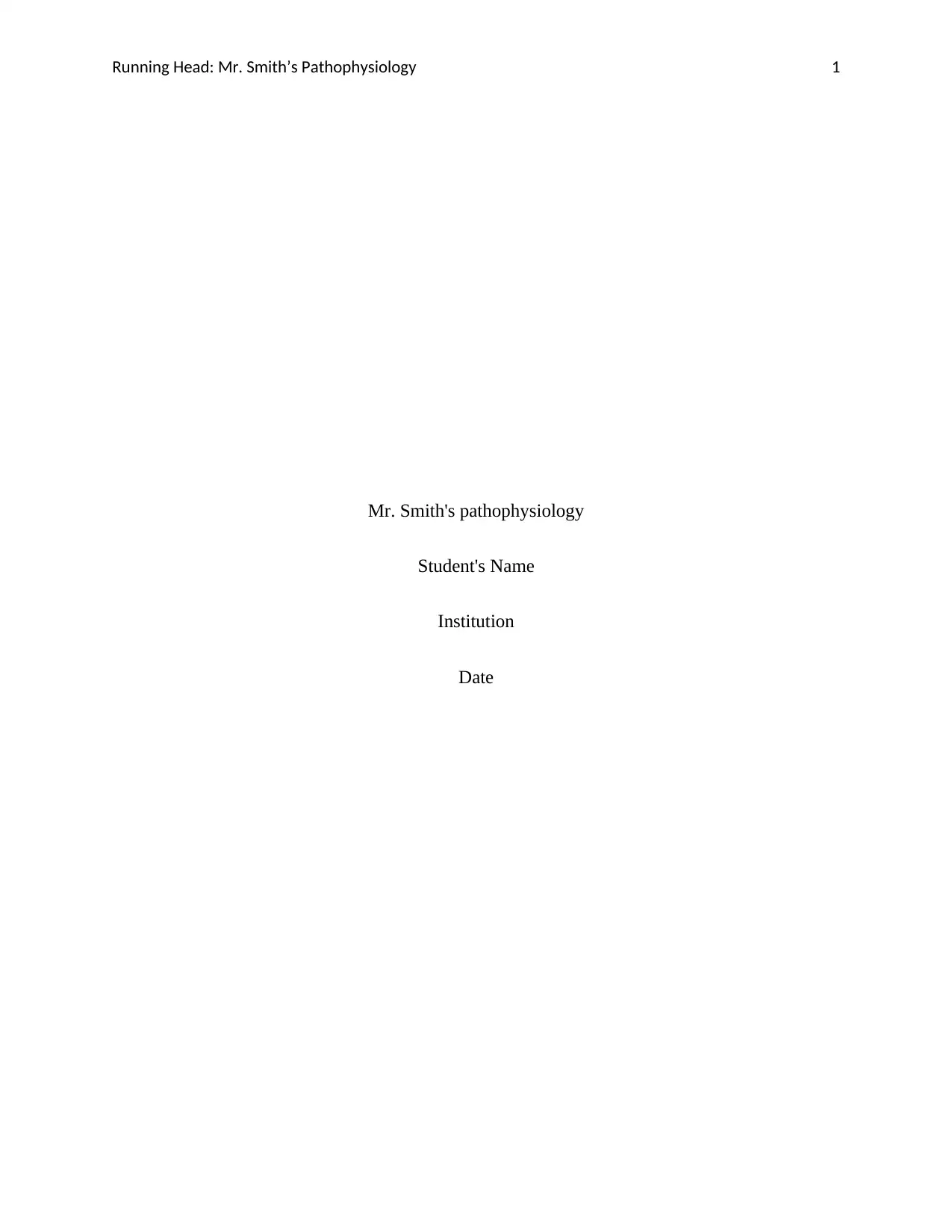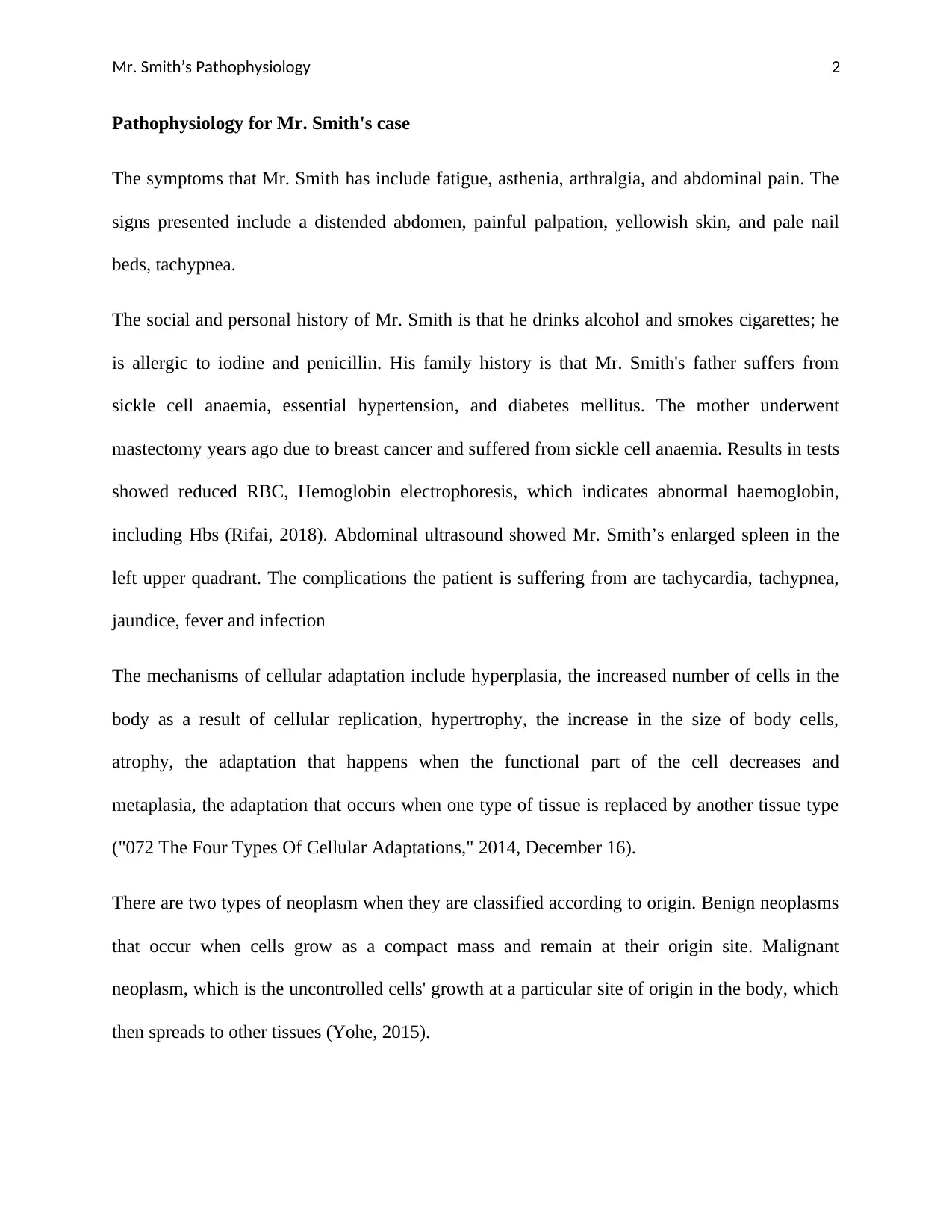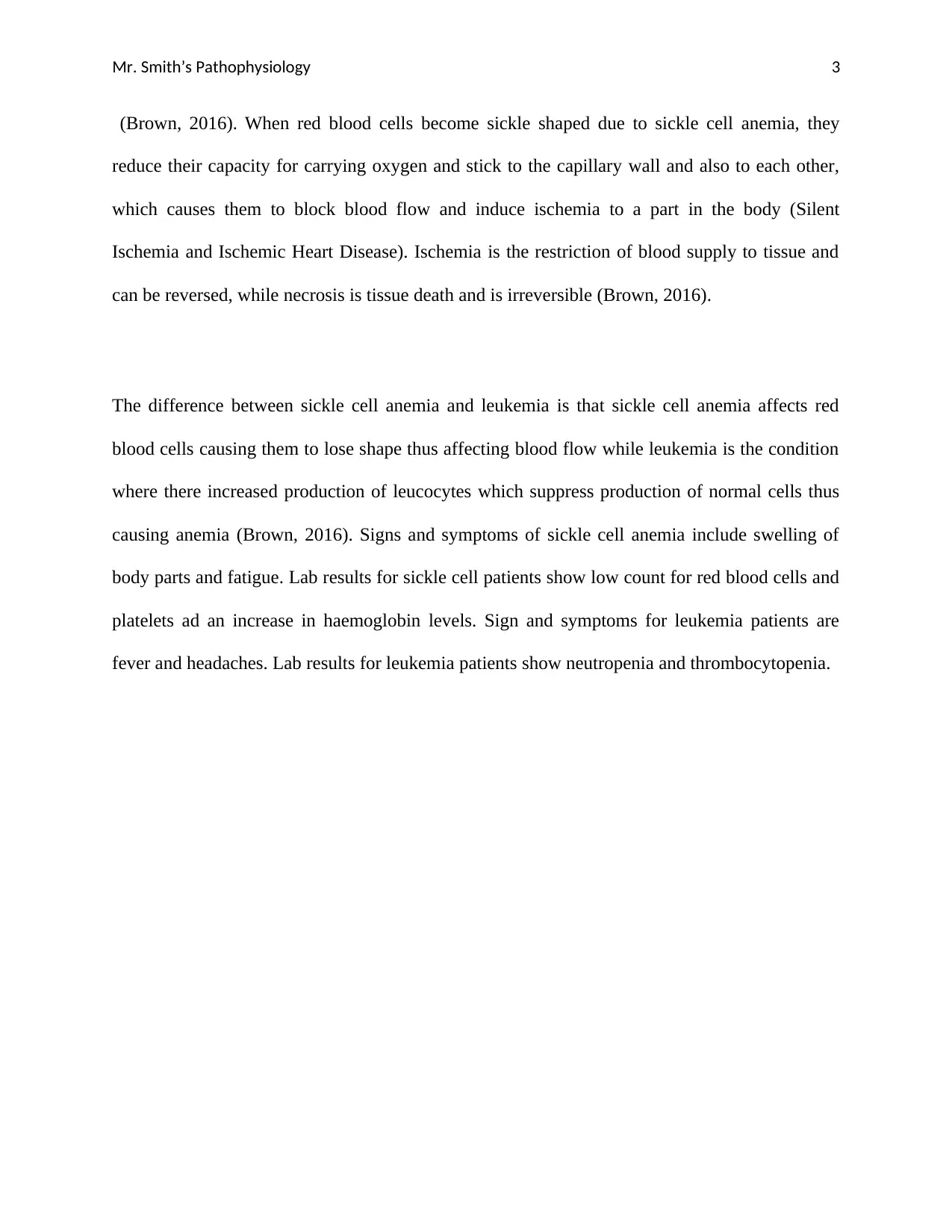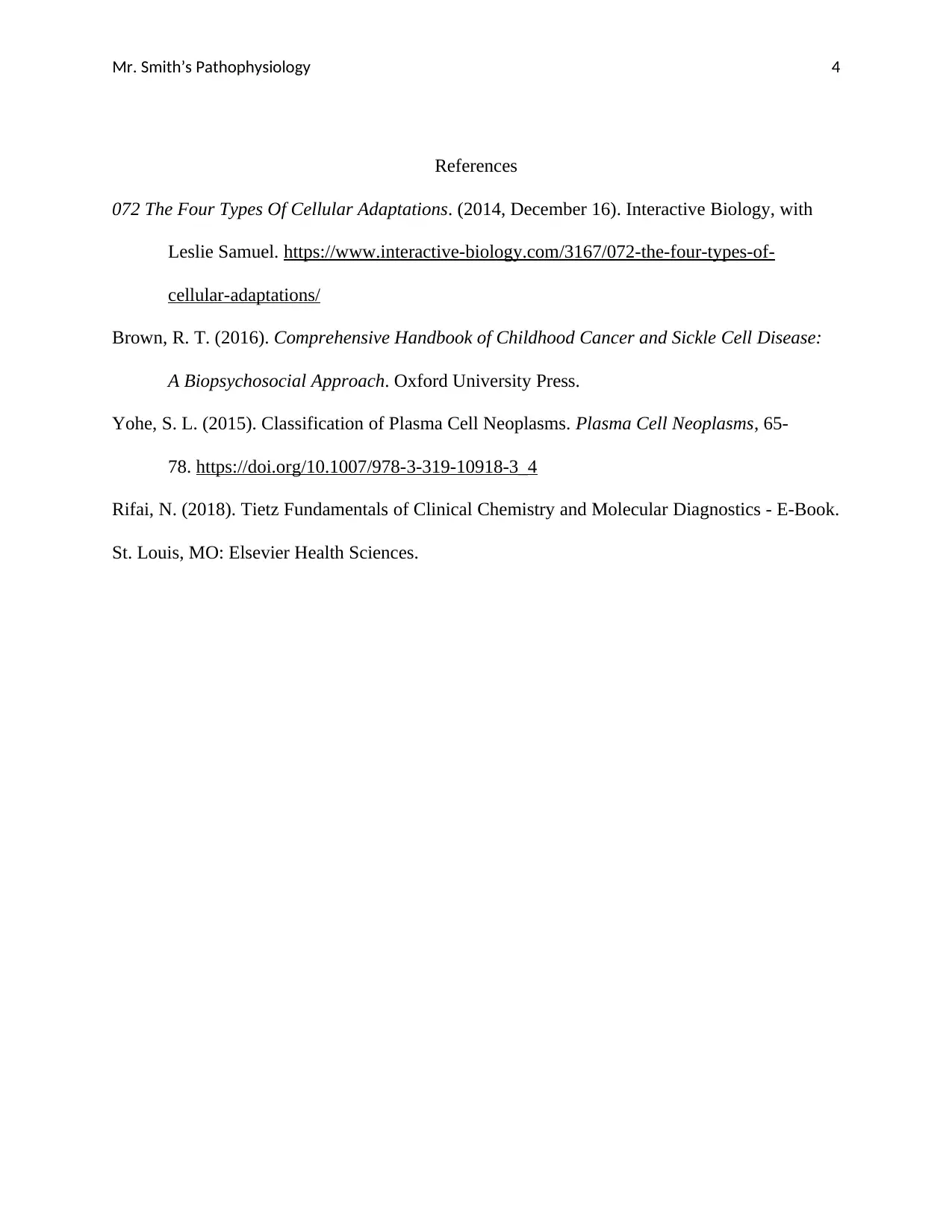Detailed Pathophysiology Report: Mr. Smith's Case Study Analysis
VerifiedAdded on 2022/08/17
|4
|636
|15
Report
AI Summary
This report provides a comprehensive analysis of Mr. Smith's pathophysiology, addressing various aspects of his condition based on a provided case study. The report begins by differentiating between Mr. Smith's symptoms and signs, followed by a review of his personal, social, and family history. It anticipates the results of ordered tests, identifying potential complications. The report then delves into cellular adaptations, explaining the four mechanisms involved. It further explores the classification of neoplasms and explains how sickle cell anemia can induce ischemia, differentiating it from necrosis. Finally, the report contrasts sickle cell anemia and leukemia, comparing their pathophysiology, symptoms, signs, and lab results. The analysis is supported by relevant references and provides a thorough understanding of Mr. Smith's medical case.
1 out of 4





![[object Object]](/_next/static/media/star-bottom.7253800d.svg)